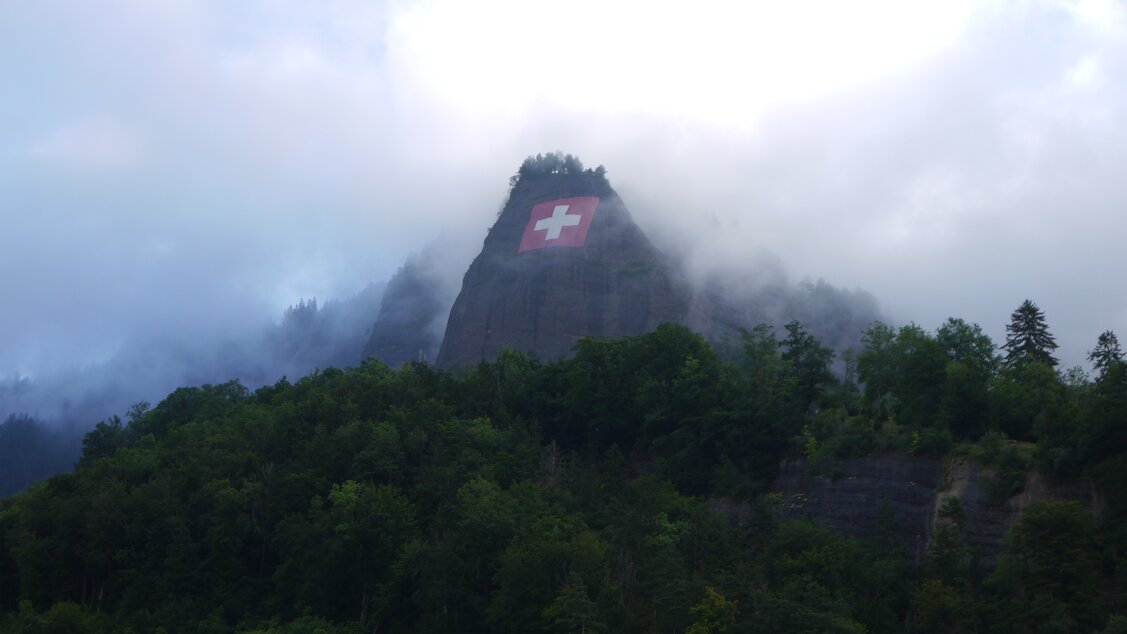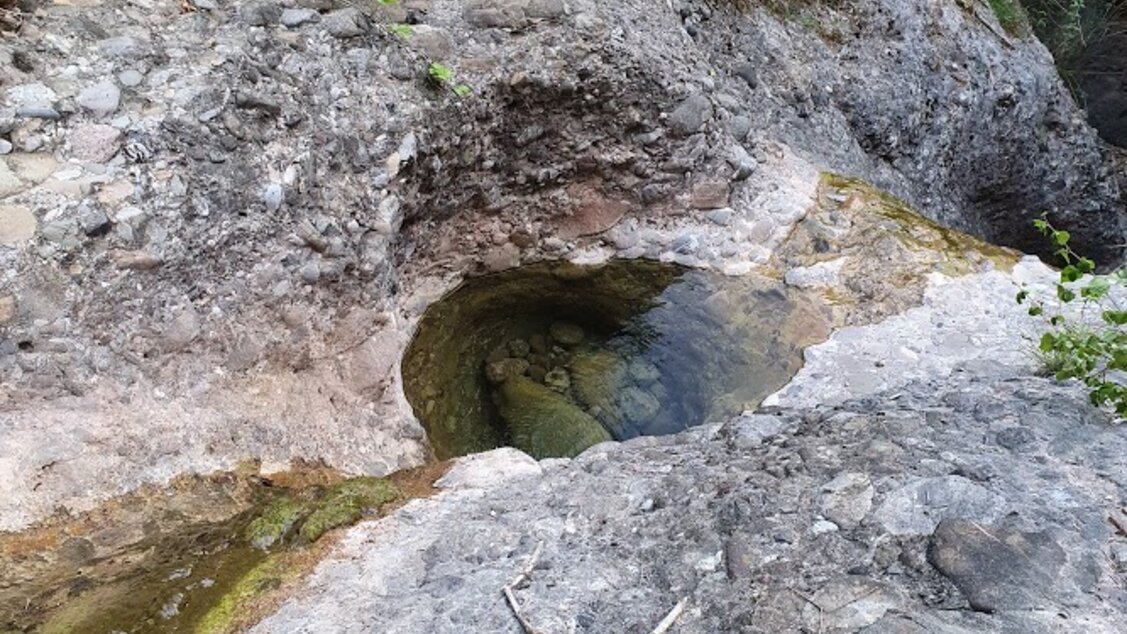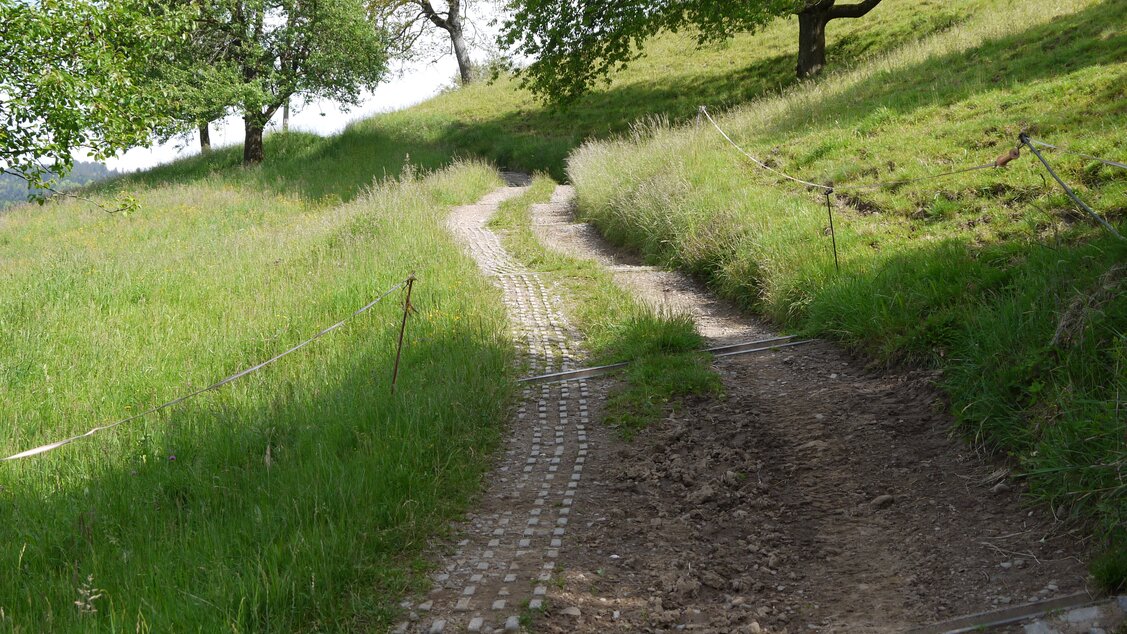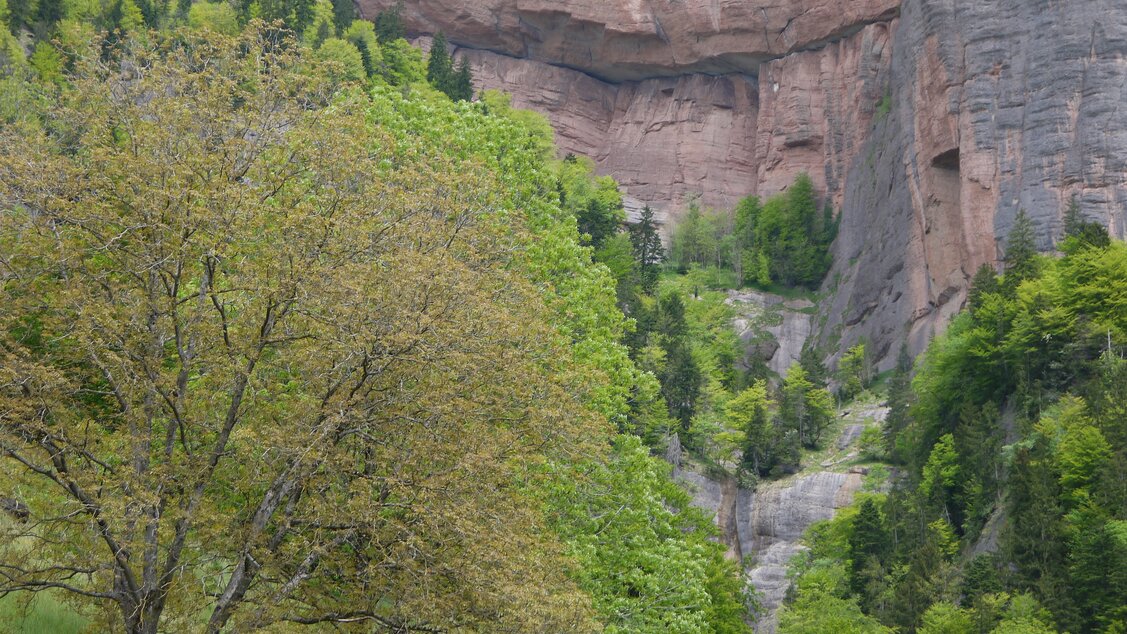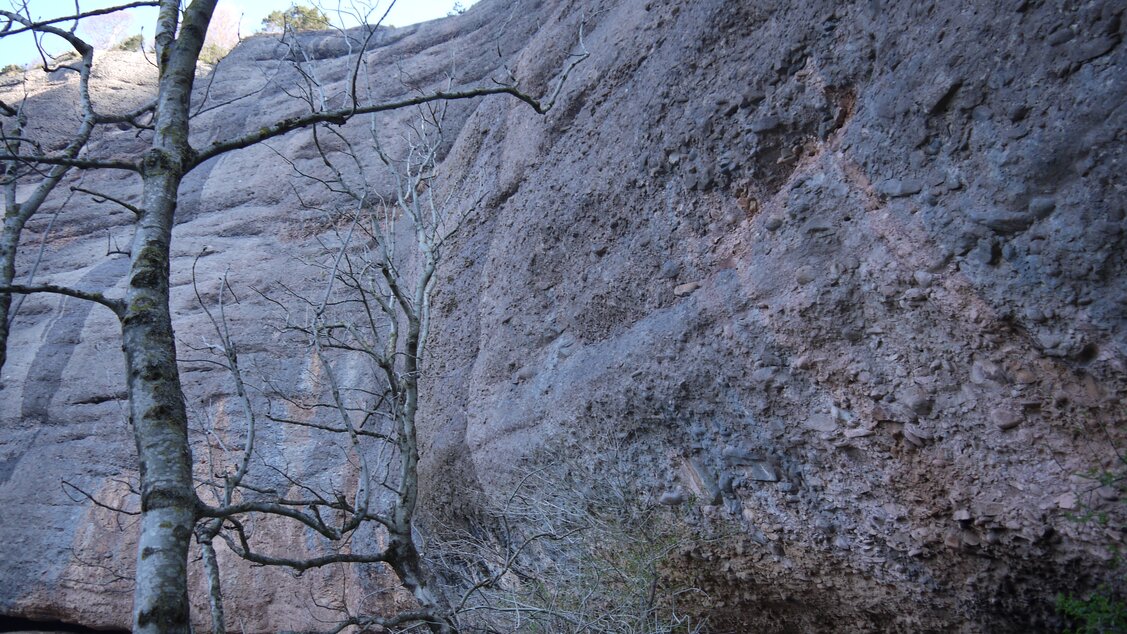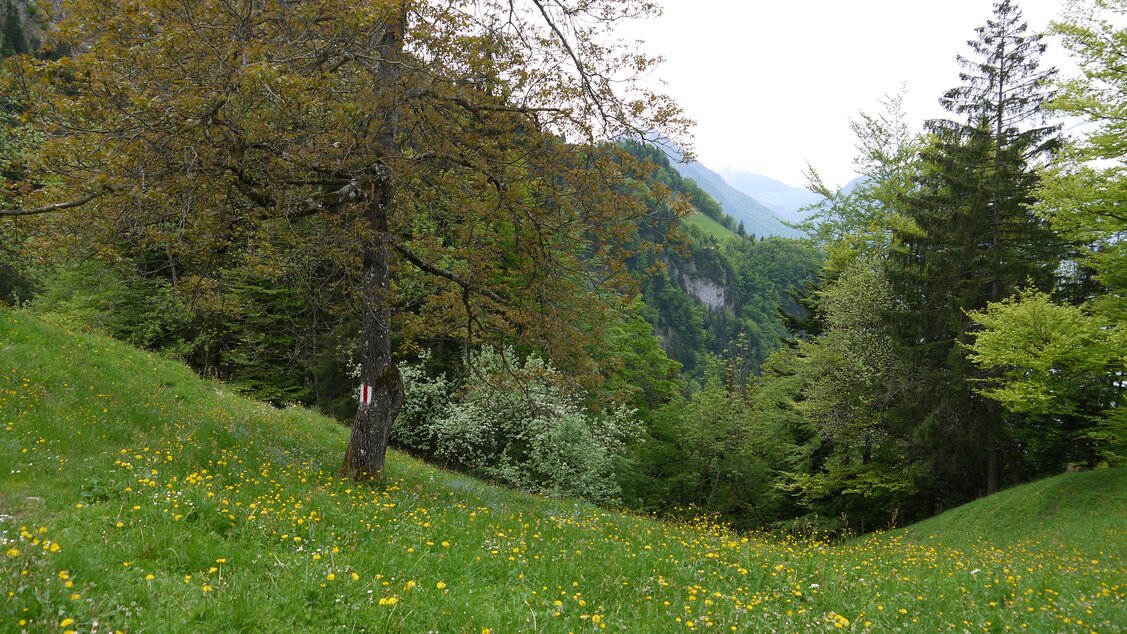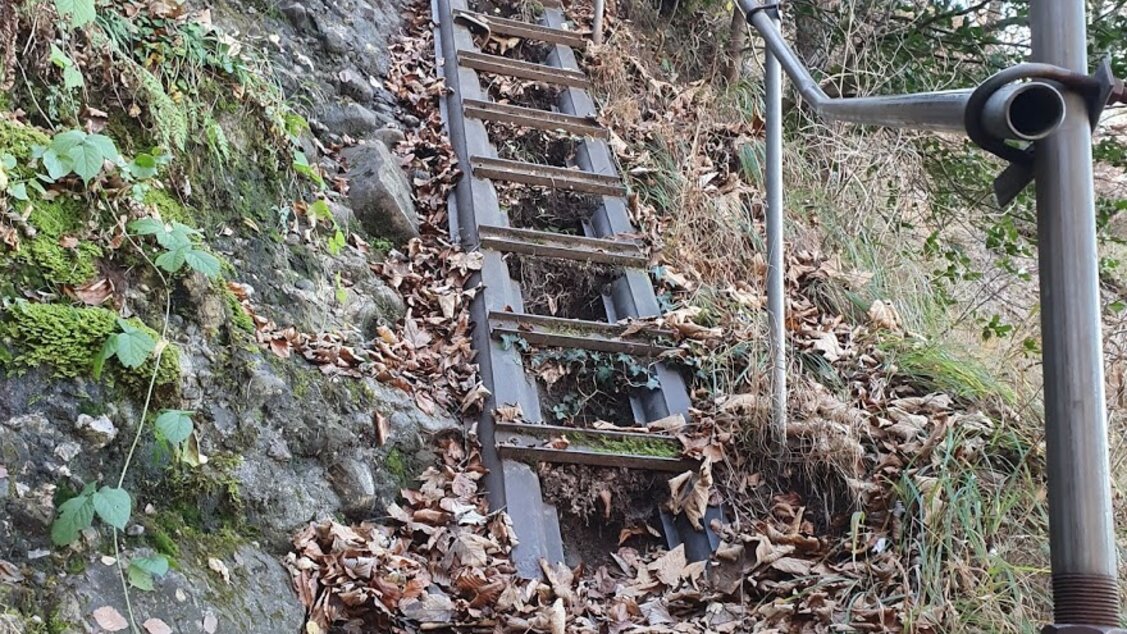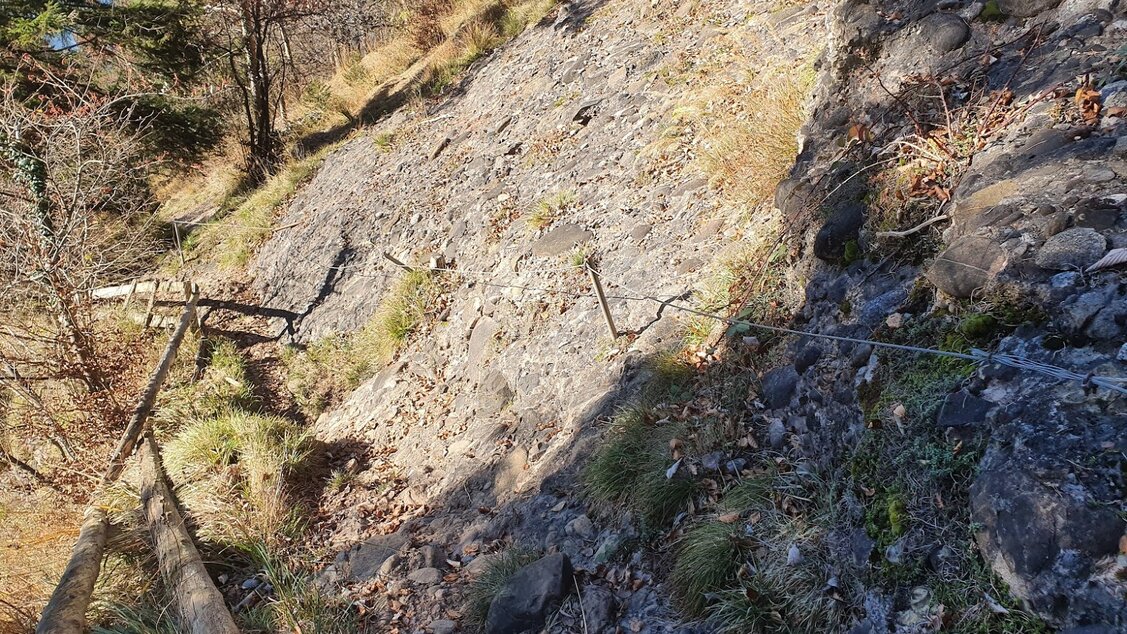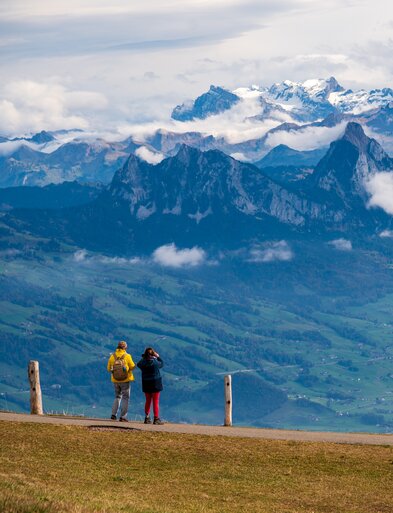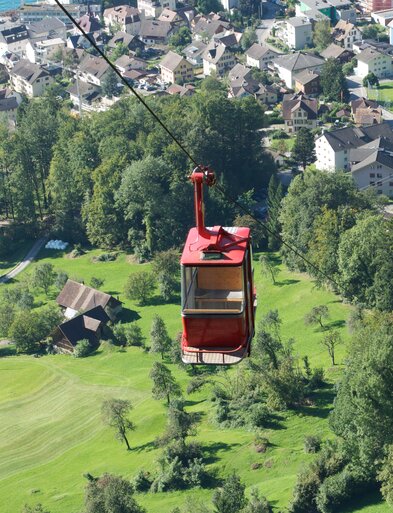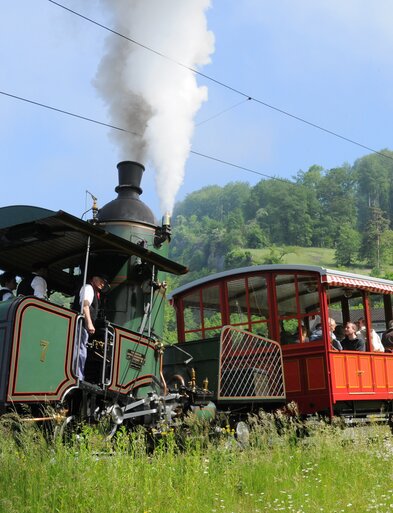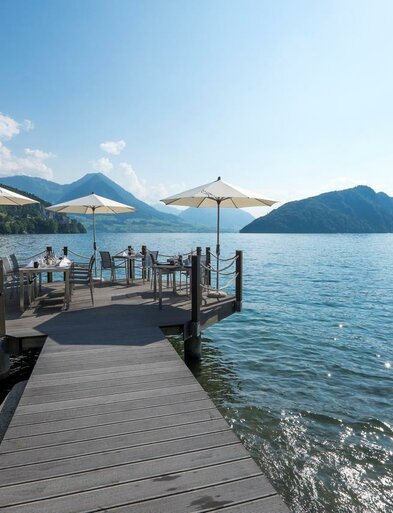High-altitude Hike to the Steigelfadbalm Cave
6354 Vitznau
Switzerland
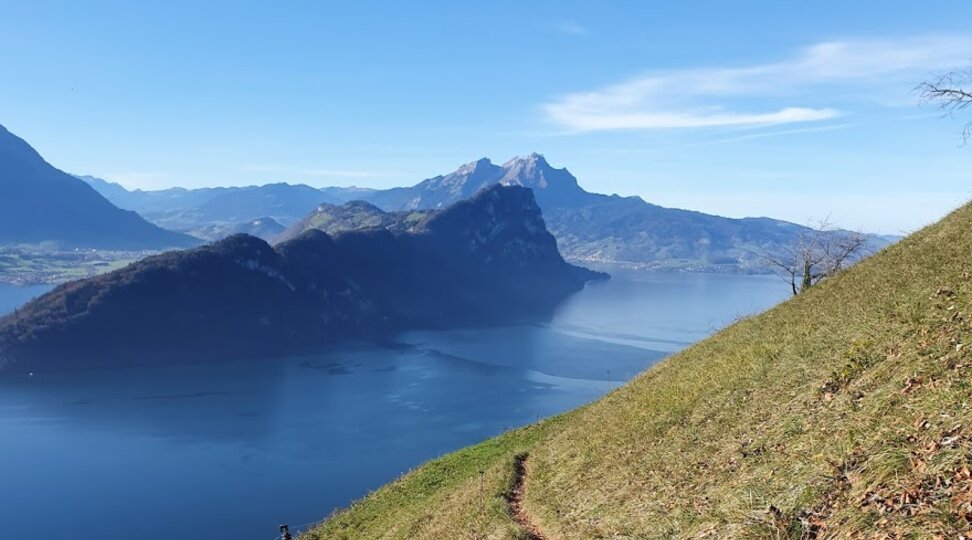
Hike Description
The hike to the Steigelfadbalm cave starts either at the boat station in Vitznau or at the Hotel Rigi right next to the parish church of St. Hieronymus.
From here you walk between the church and the Rütli restaurant on the left side of the road up over the Mühlebach. On the left is the Vitznau school building, which was built in 1968. Now the path follows the road, over the Plattenbach and onto Wilenstrasse.
From now on it goes steadily uphill with a moderate incline. The path leads past the farm and the Mätzli winery. Here, on the southern slope of the Rigi, the Vitznau wine matures and reaches its impressive Öchsle degree. And here hikers enjoy the wonderful panorama over Lake Lucerne and the mountains created by nature together with the highland cattle. You can see the Reus glacier, the Buochserhorn and the Stanserhorn as well as the Bürgenstock and the Pilatus.
At Heimwesen Tal you can see the second winery in Vitznau. It continues to the first fire pit at 597 meters above sea level. There is seating and wood for grilling. After the first rest spot, the valley station of the private Teufibalm cable car is soon reached. Here you leave the road, hike further into the forest and then up towards Heimwesen Teufibalm, which was first mentioned in 1606. The name means something like "depression in the ground".
At the signpost (height 725) hikers take the right path. A short, steep climb up a ladder leads to the Oberschwanden station. Here you cross the tracks of the Rigi railway and continue hiking past the Oberschwanden farm to Heimwesen Brand at 777 meters above sea level.
During a break, one can admire the spectacular boulders of Stollenegg, Maierisli, Hundsbuch, and Hundszingel in the Brätsch. Interestingly, they all have different structures. In the morning at sunrise and in the evening at sunset the rocks glow with a golden-reddish light. In winter, when the rocks are frozen, the icicles sparkle like diamonds in the sun.
We continue back into the forest - which is reminiscent of a primeval forest - and once again over the Plattenbach. When you look down into the stream bed you can see the glacier mills. Be careful, the path is very slippery!
Now you hike uphill again to the Gäbetschwil homestead at 838 meters above sea level. When you look at the Hundsbuch rock, you can see the Swiss flag there in summer. Across pastureland and through forest sections, the path runs straight ahead past small rocks and over the Mühlebach to the signpost in the forest, height 912. From there it goes steeply uphill to the cave landscape and the Steigelfadbalm cave at 957 meters above sea level. Here the water of the Mühlebach tumbles down over the rocks of the cave. At the simple fire pit there is the opportunity to have a picnic and once again enjoy the wonderful view over the lake.
If you have successfully explored the cave, the same route leads back to the signpost. From here, the route leads the hikers to various small artificial structures in the steep cliffs, to the Chriesbaumberg pasture land at 1.012. meters above sea level.
As an alternative, you can stop at the Hinterbergen restaurant and take the cable car back to Vitznau.
The hike now continues above the Brändifluh, past the Mälchgadewald. You follow the path comfortably and reach the Rufli home. If you look straight ahead at the stable, you will see the rock faces of the Wissifluh, our next destination. Now the path goes down the valley for a while through the Stockrübi scree slope with the most beautiful view in Vitznau.
From junction 913, the route leads up to the Wissifluh. Part of the path is secured with ropes. Once at the top you will find the Wissifluh cable car station and the restaurant of the same name (only open by prior arrangement). There is also a self-service kiosk with basic catering. From the Wissifluh, the hiking trail continues straight on to the Märis and further down towards the lake. Hikers are now on Gersau soil. The trail leads past the Kuorez garden restaurant with its cozy terrace. The final descent to the Hotel FloraAlpina is imminent.
If you are now getting exhausted, you can take the bus back to Vitznau from the hotel. Those who still have enough energy can hike along the lake to the village. You will pass the Bärenfluh and the old lido. Here the protective dam stands out. Large truck tires are stacked under the densely overgrown net, intended to absorb the force of falling rocks in the event of a slide. The bench on the dam invites you to linger and enjoy the view one last time before heading back into town. Finally, we head along the Seestrasse past the beautiful villas and gardens on the lake in the direction of the village
Discover Hiking Trails in Vitznau
The Rigi is home to a small archaeological sensation: in the Steigelfadbalm cave, stone artefacts were found for the first time in Central Switzerland, which has been shown to date back to the time of the Neanderthals. Excavations in the early 20th century also unearthed bones of cave bears.
The Steigelfadbalm Cave is an important Ice Age site.
Excavations by Wilhelm Amrein from 1913 to 1937 brought important knowledge to light. Some of the excavated stone artefacts could be clearly identified as Neanderthal tools. The most important piece is a small triangular tip made of rock crystal. It has a fairly rough finish on both sides. Such peaks are characteristic of the so-called Middle Palaeolithic, the time about 300,000 to about 200,000 years ago. This type of rock does not occur locally and must have been brought in by the Stone Age inhabitants of the cave - for example from the Uri Alps.
These finds on the Rigi made it possible to prove for the first time that Neanderthals were native to Central Switzerland.
Other finds, such as a flint knife or a bronze arrowhead, are evidence that the cave also offered protection to hunters in the Neolithic Age (5,500 to 2,000 BC) and the Bronze Age (2,200 to 800 BC). In addition to human evidence, the excavations revealed over 3,000 bones and bone fragments. 90 percent come from cave bears. Skull bones are only represented in fragments, but there are numerous lower jaws as well as canines, incisors and molars.
The cave bear finds are exhibited in the regional museum of the Lucerne Rigi communities and in the glacier garden, or are in the depot of the Cantonal Archeology of Lucerne.
Cave bears were imposing animals: they weighed 1,500 kilograms, were about 3.5 meters long and up to 1.75 meters high at the shoulder. They lived 130,000 to 20,000 years before present time. They probably became extinct due to the dwindling food supply when a cold maximum was reached in the last ice age.
